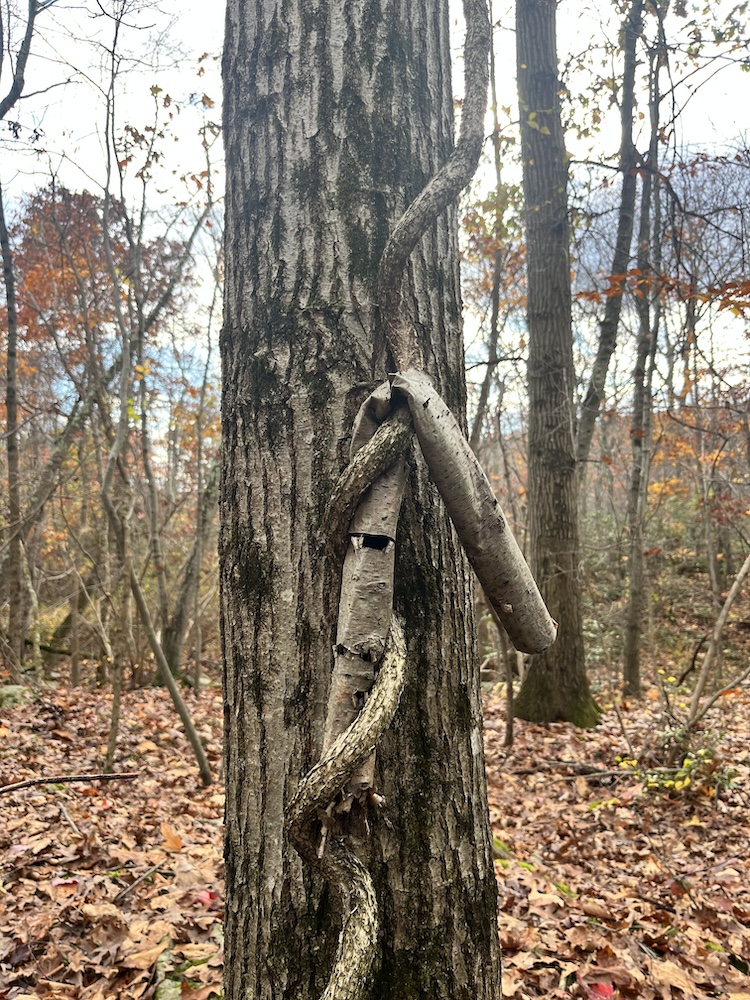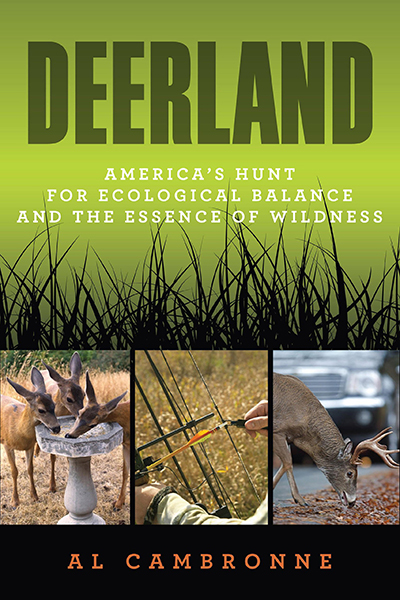Have you battled oriental bittersweet in your woods?
Working in the Forestry Program at the Watershed Agricultural Council means I educate others about how to control invasives, but because I don’t own or manage any forest land, I don’t often do the management work myself. So, when my friend, Cory Tiger, Conservation Easement and GIS Manager at Hudson Highlands Land Trust, showed me a volunteer opportunity to cut invasive oriental bittersweet (Celastrus orbiculatus) vines at a Westchester Land Trust (WLT) property, I happily said yes.
WLT staff brought us and other volunteers to the site on a rainy Friday morning and provided all the tools we would need, like loppers and saws. We quickly went over how to identify oriental bittersweet and then we were set loose to tackle as many vines as we could.

Young bittersweet is light brown with small gray spots.
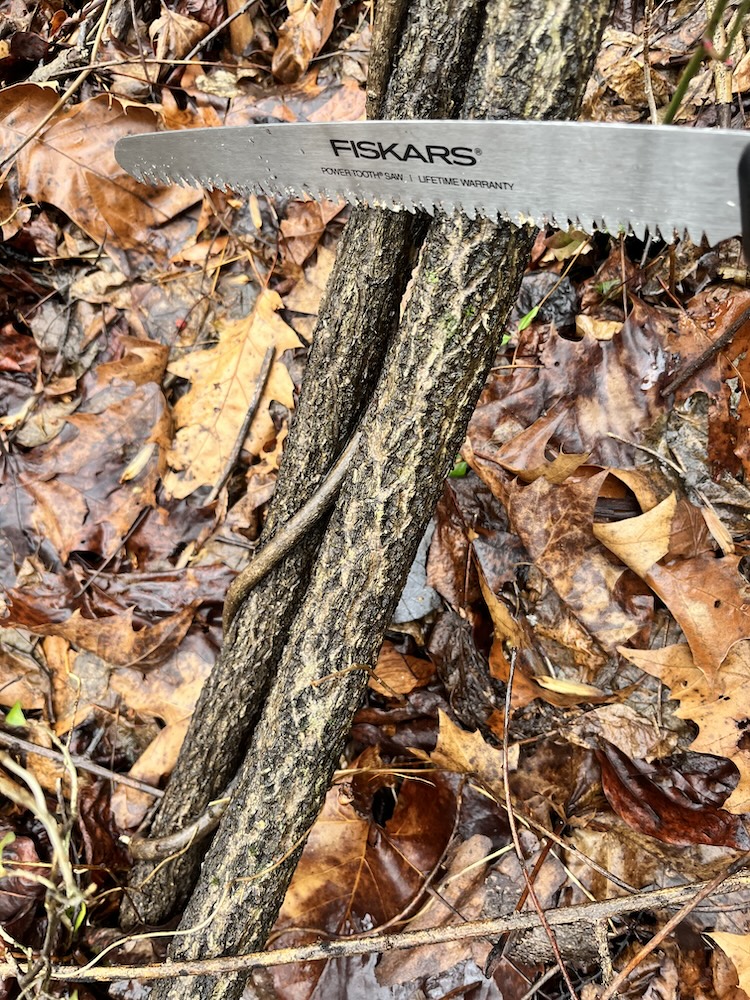
You can see the difference in size, color, and texture of the vine as it ages.
Oriental bittersweet varies in size and can double in diameter in a single season, going from a problem you can solve with pruners and loppers to one you must solve with a saw. The older vines are so massive that they look like small trees, and they typically have a dark gray-brown base color with crisscrossing light gray diamond patterns on top. When it’s young, oriental bittersweet looks lighter brown and has light gray speckles. Most vines climb straight up and down, but bittersweet is one of the few that I see wrapping around trees like a snake.
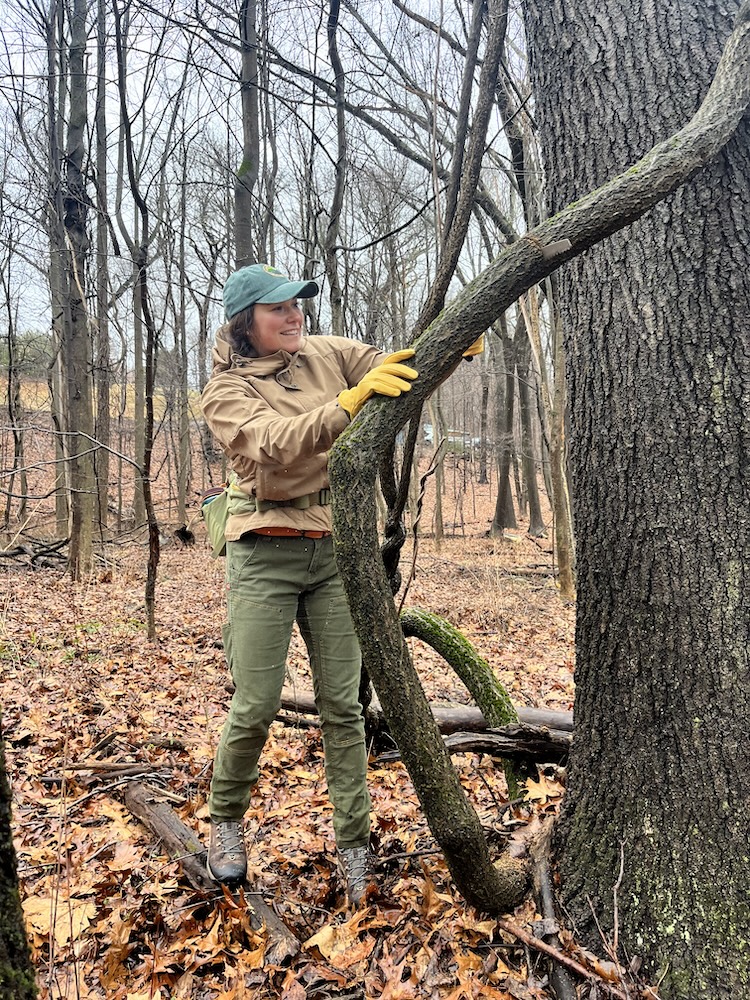
Cory sawing one of the biggest vines of the day.
Bittersweet grows quickly and forms a heavy, woody mass that weighs on trees. When snow or ice collects on branches, the added weight can cause them to break, or in extreme cases, help pull the whole tree down. If the tree manages to stay upright then the vine might shade out the canopy with it’s own leaves, all while strangling the tree in its vice grip.
Like all invasive species, oriental bittersweet doesn’t have a predator here, so it grows unchecked. This rapid growth causes it to spread like wildfire, and we quickly reached the epicenter of the issue when we spotted a mass of vines on some of the largest trees at the preserve.
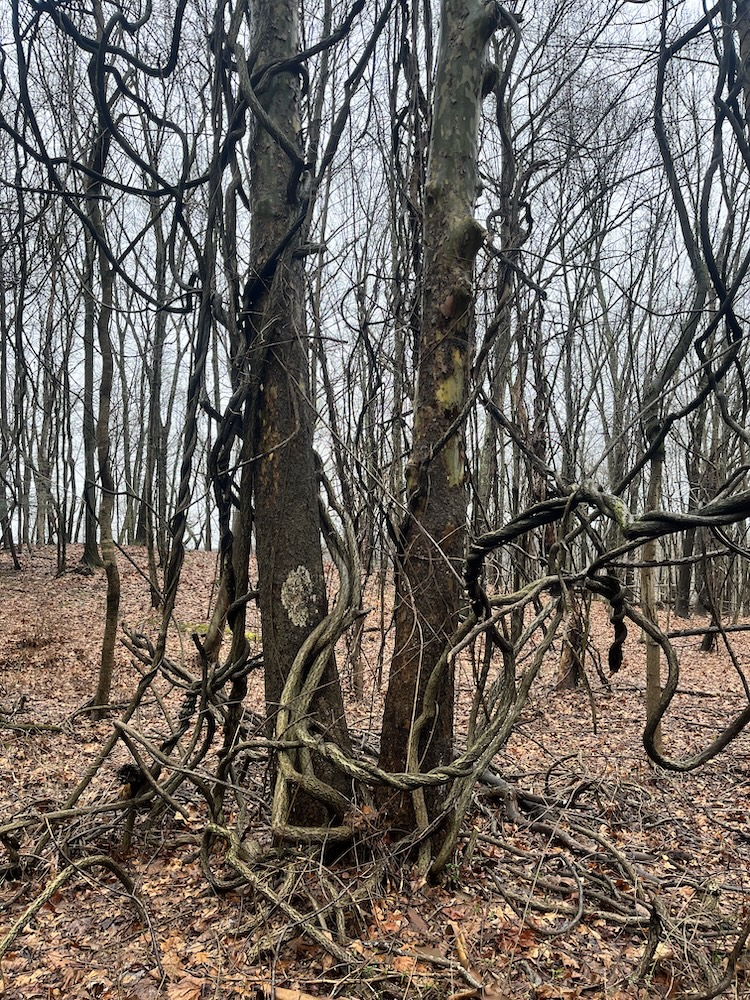
A sight that is all too common in the Lower Hudson Valley- a tangle of bittersweet.
It’s exciting to tackle the biggest vines and satisfying when you cut them or saw them down (once at ground level and again about as high up as you can reach), but it can also be dangerous. I’d read the MyWoodlot recommendations for cutting vines, so I knew that sometimes vines will cling to dead trees or branches, and vines can even become the main support for a snag tree. Always look up before cutting a vine so you can avoid dead trees and branches, and if you find one like that don’t cut it, no matter how tempting it is. Cory and I quickly learned how important it is to look up first when one of the saplings we tried to free was so dead and rotten that the sawing motion on the vine broke off the top half of the tree. It came crashing down, very narrowly missing where we were standing just moments before. After that we made sure to always look up!
A bittersweet vine at Clearpool Model Forest characteristically wrapped around this young black birch before it died. Birches rot from the inside out, so all the vine was left holding was a perfect casing of the birch bark.
By the time our work was done we had cut hundreds of vines and freed dozens of trees, and I had satisfied my craving for a hands-on forest stewardship activity. If you’re looking to get your hands dirty out in the woods, WLT hosts regular volunteer days. Click here to learn about WLT’s volunteer days. If you’ve got plenty of bittersweet of your own to deal with, and if your property is in the NYC Watershed, then you can apply for grant funding to help with removal through the Management Assistance Program.
This mapping tool will help you determine if your property is in the NYC Watershed.
Use this link to apply for grant funding through the Management Assistance Program.
